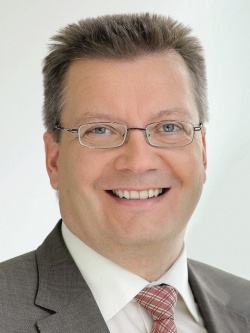Does Germany top Europe in unnecessary diagnostics
Statistics show significant increase in scans and left heart catheterisations, Susanne Werner reports

When it comes to the number of individual medical examinations, Germany among Europe’s frontrunners, according to statistics from the scientific institute of the AOK (WIdO). Heart catheterisations are carried out far more frequently there than in Austria or Switzerland.
Uwe Deh, Head of the Federal Association of the AOK, is indignant. He speculates that financial interests rather than medical reasons are behind this increase. However, representatives of medical societies argue otherwise. For instance, Professor Michael Forsting, President of the German Radiological Society (DRG) and Director of the Institute of Diagnostic and Interventional Radiology and Neuroradiology at Essen University Hospital, emphasises that these increases are founded in medical advances.
The data to which Uwe Deh refers come from the ‘Quality Assurance with Routine Data’ (QSR), a procedure developed by the WIdO with other partners, including hospitals. According to this data, hospital use of imaging diagnostics has increased by more than 50% between 2006 and 2010 and, since 1990, the number of left heart catheterisations in Germany more than tripled. In 2010 it was around 70% higher in this country than in Austria, and 98% higher than in Switzerland. ‘The QSR procedure is recognised across Europe,’ explained Christian Günster, WIdO Head of Research. Its particular feature is the assessment of a patient’s health status over a long period and the data also includes the time after hospitalisation. ‘In view of the increasingly shorter hospital stays we feel that the follow-up observation is an absolutely necessary step,’ he said. This is also almost unique in Europe. ‘In Germany, the legislator has created the opportunity to include this observation in the legally binding quality assurance process,’ he pointed out. ‘The Health and Social Fund in Lower Austria is currently preparing a very similar QSR project which includes followup observations.’
Studies do not attest to better medicine
How can the statistics increase be explained? Uwe Deh suspects it is due to the excess capacities in German hospitals. As hospitals are only working to 80% of their capacity, they try to increase revenue by scheduling more examinations than medically necessary. He is particularly annoyed about the ‘medical products whose medical benefit is often dubious’. As an example, he quotes stents that are implanted into cerebral arteries to lower the risk of stroke. ‘A 2011 study has shown that these do not actually lower the risk of strokes but, to the contrary, have almost doubled it within a year. In Germany alone, more than 3,500 patients have been treated with this uncontrolled procedure since its introduction. The study was stopped in the US after the treatment of only 451 patients because of this damage, he warns.
‘Many German hospitals,’ he concludes, ‘can no longer guarantee patients that they are being operated on purely for medical reasons.’ After all, the statistics also show that the large number of examinations doesn’t necessarily lead to better patient care in Germany. ‘Germany is one of the countries at the very top when it comes to mortality rates from heart attacks,’ he adds.
Modern treatments require more imaging
Prof. Forsting does not accept these accusations. He is convinced that the cause of the increase is modern treatment concepts. ‘Cancer patients are treated in a much more individualised way than 10 or 20 years ago. Doctors need to carry out CT scans after only a few weeks to observe vascular growth,’ he explains. Moreover, imaging procedures now deliver good and meaningful images, which no doctor can do without, the DRG President adds. ‘MRI delivers particularly good images of joints. Whilst arthroscopies used to be the standard treatment MRI is now the procedure of choice. This spares patients invasive examinations.’
Professor Eckhart Fleck, Director of the Clinic for Internal Medicine at the German Heart Centre Berlin, and press officer of the German Cardiac Society (DGK), agrees. ‘There are plausible reasons for the growth and these are founded in medical treatment,’ and he points to the guidelines on emergency treatment for heart attacks. The large number of left heart catheter measuring stations is necessary to treat patients comprehensively and quickly – ‘The patient should be in a location where they can be treated no later than one hour after the first symptoms.’
Profile:
Uwe Deh became a member of the board at the Federal Association of the AOK in October 2011. He is responsible for the business units Care/Contracts, Finances, and the AOK Scientific Institute (WIdO), Medicine, and Electronic Data Processing Control. He studied Business Administration with a focus on Health Economics at the universities of Göttingen and Magdeburg and began his career at the (VdAK/AEV) in Mecklenburg- Vorpommern. In 1999 he joined the AOK Sachsen-Anhalt, heading the Hospital Division and building up the Health and Medicine branch, comprised of all the Contracts and Services business. He was a board representative for AOK Sachsen- Anhalt from 2005, and was appointed its Chairman in 2008.
09.11.2012










